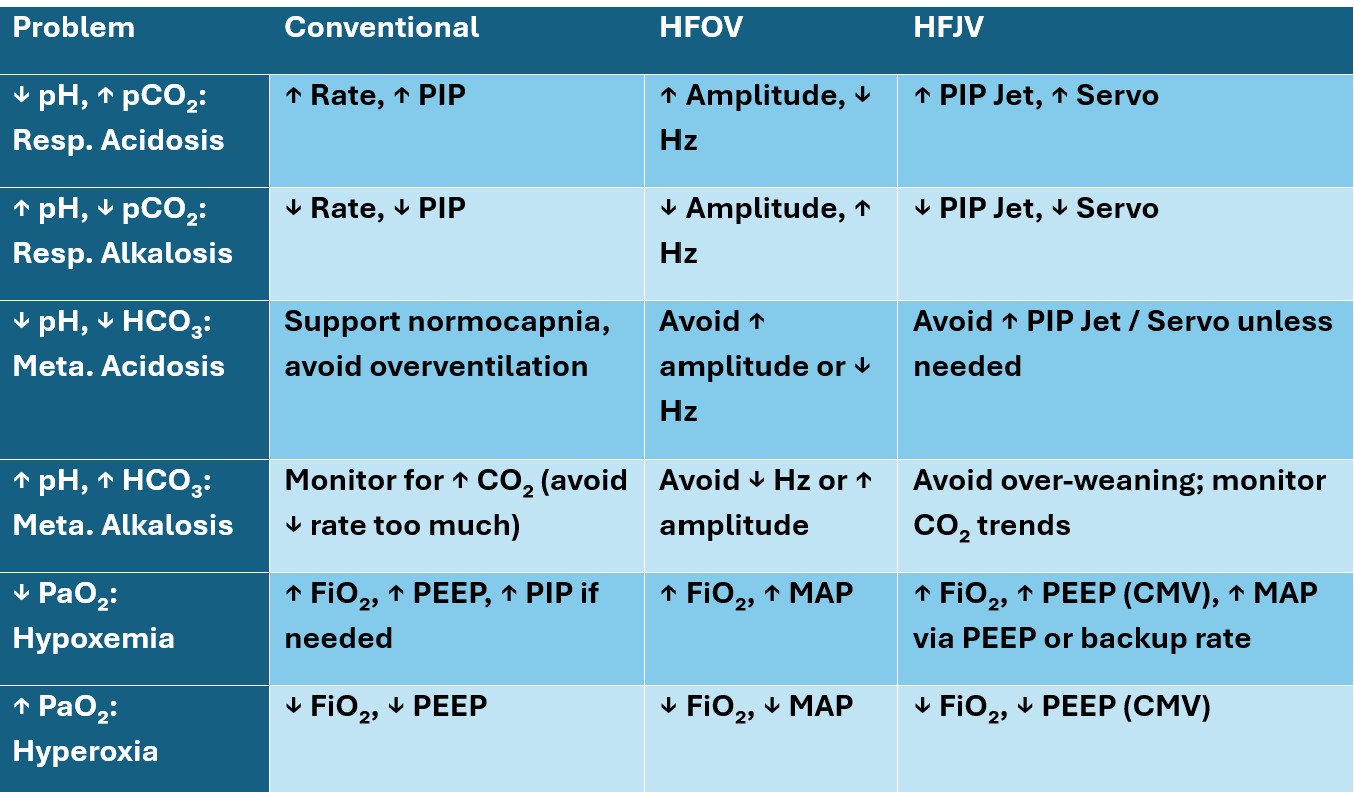
Ventilators & Blood Gas Management in the NICU
Teach Me Tuesday: Ventilators and Blood Gases in the NICU
In the NICU, blood gases are our clinical compass, guiding decisions that can shape outcomes for our tiniest patients. This week’s Teach Me Tuesday builds off last week’s post on normal neonatal blood gases, and shifts focus toward how to adjust ventilation based on those values — whether you’re using conventional ventilation, HFOV, or Jet.
We’ll break down the three primary modes of neonatal ventilation, then walk through what to change based on different types of blood gas results. Whether you’re new to vents or brushing up as a seasoned nurse, this post is for you.
🔄 The Three Modes of NICU Ventilation: Going Beyond the Basics
1. Conventional Ventilation (CMV)
This is the most common ventilator mode used in the NICU for conditions like respiratory distress syndrome (RDS), apnea, or post-operative support.
Exhalation is passive
Delivers larger tidal volumes than HFV, typically around 4–6 mL/kg
Changes in rate, PIP, and PEEP directly affect ventilation and oxygenation
Typical Settings:
Rate: 20–60 breaths per minute
PIP: 15–25 cm H₂O
PEEP: 4–6 cm H₂O
i-Time: 0.3–0.5 seconds
FiO₂: Adjusted to target SpO₂ range
Quick Tip: In conventional ventilation, rate affects CO₂ and PEEP affects oxygenation.
2. High-Frequency Oscillatory Ventilation (HFOV)
HFOV delivers small tidal volumes (often < dead space) at extremely high frequencies — often 8–15 Hz (480–900 breaths per minute). It’s often used when conventional ventilation fails to achieve adequate gas exchange or when there’s a risk of barotrauma.
Exhalation is active, using a piston to push air out
Best for diffuse lung disease (like RDS) or CO₂ clearance problems
Main drivers: Amplitude (ΔP) for CO₂ clearance, and MAP for oxygenation
Typical Settings:
Frequency: 8–15 Hz
Amplitude: Controls wiggle and CO₂ removal
MAP: Main oxygenation lever
FiO₂: Adjust to target saturation
Quick Tip: Think “Amplitude = ventilation, MAP = oxygenation” with HFOV.
3. High-Frequency Jet Ventilation (HFJV)
Jet ventilation delivers rapid bursts of gas at rates of 240–660 breaths per minute (or higher), with passive exhalation. It’s often used in air leak syndromes, PIE, pulmonary hypoplasia, or when minimizing lung injury is paramount.
What sets Jet apart is how it:
Delivers very low tidal volumes
Uses less MAP to maintain alveolar recruitment compared to HFOV
Minimizes barotrauma by avoiding the pressure swings of conventional modes
Typical Settings:
Jet Rate: 240–660 bpm
PIP Jet: Controls tidal volume
PEEP (via CMV): Maintains lung recruitment
Servo (Power): Strength of jet burst
FiO₂: Adjust to oxygenation needs
Quick Tip: Jet combines well with CMV to stabilize pressures and allow fine-tuned ventilation — and is often quieter at the bedside, which can mask signs of decompensation.
🧪 What the Gas Tells You: Vent Changes by Blood Gas Type
Blood gases help you determine whether to adjust for ventilation (CO₂) or oxygenation (PaO₂). Here's how to respond across different ventilator modes:
🔄 Ventilator Management by Blood Gas Abnormality

🫁 Parent Education Moment: Why Do Ventilators Look So Different?
It’s helpful to prepare parents for the range of machines and sounds they might see in the NICU. A baby may start on a traditional ventilator, transition to high-frequency oscillatory ventilation, or be placed on jet ventilation for specialized needs.
You can explain:
Conventional ventilators work more like our own breathing – easy to see and hear breaths.
HFOV often makes the chest “wiggle,” and uses a constant pressure to keep lungs open.
Jet ventilation is nearly silent and uses tiny puffs of air — parents may not see much movement, but it’s working.
Remind families that each machine supports their baby’s lungs in different ways, and it’s normal to change based on progress.
🧠 Final Thoughts: Use the Mode to Match the Gas
Blood gases are more than numbers — they tell you how well the baby is exchanging oxygen and removing CO₂. Your ventilator is the tool, but your interpretation and action is what makes the difference.
Understanding how conventional, HFOV, and Jet ventilation work — and how to adjust them based on a blood gas — is a foundational skill in NICU nursing. Use this guide to build confidence and teach others at the bedside.
